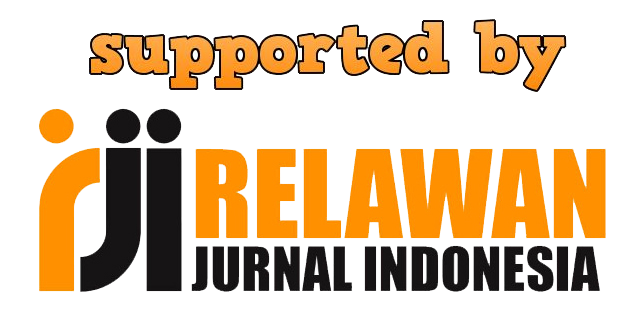Ethnic Fractionalization, Ethnic Polarization, and Potential Conflict in Parent Districts of IKN
DOI:
https://doi.org/10.23887/jish.v13i1.69381Keywords:
Ethnic Fractionalization, Ethnic Polarization, Ethnic Conflict, IKNAbstract
The purpose of this research is to determine the degree of ethnic fractionalization and polarization in the parent districts of the new Indonesian Capital of Nusantara (IKN), namely Kutai Kartanegara (Kukar) and North Penajam Paser (PPU) Districts, and assess the potential of ethnic conflict. The research involves quantitative analysis, where statistical formulas are used to calculate the ethnic fractionalization index (EFI) and ethnic polarization index (EPOI). The 2010 BPS population census, the most recent census based on ethnicity, is the primary data used for the core analysis. The study results reveal that both districts have a high level of ethnic diversity, with Kukar having a higher EFI than PPU (0.80 versus 0.75). However, PPU has a greater potential for conflict, as it has a higher EPOI (0.66) than Kukar (0.59-0.60). Considering the socio-political situation, the condition of ethnopolitics in Kukar is relatively conducive to providing support for the IKN development. In PPU, its ethnopolitical climate appears favorable for supporting the development of IKN. However, it is crucial to pay due attention to the issue of indigenous Paser people in IKN, as they represent the third largest ethnic group in Rings 1 and 2 of the IKN areas.
References
Alesina, A., Devleeschauwer, A., Easterly, W., Kurlat, S., Wacziarg, R. (2003). Fractionalization. Journal of Economic Growth, 8(2), 155-194. https://doi.org/10.1023/A:1024471506938
Almalki, S. (2016). Integrating Quantitative and Qualitative Data in Mixed Methods Research—Challenges and Benefits. Journal of Education and Learning, 5(3), 288. https://doi.org/10.5539/jel.v5n3p288
Ananta, A., Arifin, E. N., Purbowati, A., & Carnegie, P. J. (2023). Does diversity matter for development? New evidence of ethnic diversity’s mediation between internal migration and economic growth across Indonesia’s regions. Journal of Population Research, 40(3), 1–21. https://doi.org/10.1007/s12546-023-09304-z
Ananta, A., Utami, D. R. W. W., & Handayani, N. B. (2016). Statistics on Ethnic Diversity in the Land of Papua, Indonesia. Asia and the Pacific Policy Studies, 3(3), 458–474. https://doi.org/10.1002/app5.143
Ananta, A, Arifin, E.N., Hasbullah, M.S., Handayani, N.D, & Pramono, A. (2015). Demography of Indonesia’s Ethnicity. Singapore: ISEAS Publishing.
Apuke, O. D. (2017). Quantitative Research Methods : A Synopsis Approach. Kuwait Chapter of Arabian Journal of Business and Management Review, 6(11), 40–47. https://doi.org/10.12816/0040336
Arifin, E.N et al. 2014. Uncovering Indonesia’s Ethnic Diversity: The National, Provincial, and District Levels. Singapore: ISEAS.
Arswendi, R. (2015). Interaksi Antarbudaya Etnis Buginese-Makassarese Dengan Etnis Javanese (Studi Mahasiswa Buginese-Makassarese Dengan Mahasiswa Etnis Javanese Di Lingkungan Kos Di Semarang). Konvergensi, Volume 01 No. 02, Juli.
Bleaney, M., & Dimico, A. (2017). Ethnic diversity and conflict. Journal of Institutional Economics, 13(2), 357–378. https://doi.org/10.1017/S1744137416000369
Budi, M. (2020). The Effect of Ethnic Diversity on Expenditure Inequality in Indonesia. Journal of Indonesian Applied Economics, 8(2), 8–26. https://doi.org/10.21776/ub.jiae.2020.008.02.2
Collier, P., & Hoeffler, A. (2004). Greed and grievance in civil war. Oxford Economic Papers, 56(4), 563–595. https://doi.org/10.1093/oep/gpf064
de Jonge, H., & Nooteboom, G. (2006). Why the Madurese? Ethnic conflicts in West and East Kalimantan compared. Asian Journal of Social Science, 34(3), 456–474.
https://doi.org/10.1163/156853106778048597
Denny, E. K., & Walter, B. F. (2014). Ethnicity and civil war. Journal of Peace Research, 51(2), 199–212. https://doi.org/10.1177/0022343313512853
Disman, A., Barliana, M., & Syaom, M. (2017). The Use of Quantitative Research Method and Statistical Data Analysis in Dissertation: An Evaluation Study. International Journal of Education, Vol. 10 No. 1, August, Pp. 46-52. Doi: Http://Dx.Doi.Org/10.17509/Ije.V10i1.5566.
Dowd, C. (2015). Grievances, governance and Islamist violence in sub-Saharan Africa. Journal of Modern African Studies, 53(4), 505–531. https://doi.org/10.1017/S0022278X15000737
Dunne, J. P., & Tian, N. (2019). Conflict determinants in Africa. Economics of Peace and Security Journal, 14(2), 21–31. https://doi.org/10.15355/epsj.14.2.21
Esteban, J., & Ray, D. (2008). Polarization, fractionalization and conflict. Journal of Peace Research, 45(2), 163–182. https://doi.org/10.1177/0022343307087175
Hoth, M.D., & Mengal, S. (2016). Greed Versus Grievance Debate Highlighting Its Empirical, Theoretical Foundations and Applicability to the Study of Conflicts: A Case of Balochistan Province in Pakistan. Journal of Law and Society, Vol. XLVII, No. 68
Montalvo J.G, Reynal-Querol M. (2005). Ethnic Polarization, Potential Conflict, and Civil Wars. The American Economic Review, 95 (3): 796-816. DOI: 10.1257/0002828054201468
Montalvo, J.G., & Reynal-Querol, M. (2002). Why Ethnic Fractionalization? Polarization, Ethnic Conflict and Growth. SSRN Electronic Journal. https://doi.org/10.2139/ssrn.394926
Hudriati, A., Noer, M. U., & Nadifah, N. (2020). Investigating the Influence of Stereotype in Intercultural Communication Towards English Literature Students of Universitas Muslim Indonesia. ELT Worldwide: Journal of English Language Teaching, 7(1), 77.
https://doi.org/10.26858/eltww.v7i1.15397
Juditha, C. (2015). Stereotip dan Prasangka dalam Konfl ik Etnis Tionghoa dan Bugis Makassar. Jurnal Ilmu Komunikasi, 12(1), 87–104. https://doi.org/10.24002/jik.v12i1.445
Klašnja, M., & Novta, N. (2016). Segregation, Polarization, and Ethnic Conflict. Journal of Conflict Resolution, 60(5), 927–955. https://doi.org/10.1177/0022002714550084
Koopmans, R., & Schaeffer, M. (2015). Relational diversity and neighbourhood cohesion. Unpacking variety, balance and in-group size. Social Science Research, 53(May), 162–176.
https://doi.org/10.1016/j.ssresearch.2015.05.010
Kovacic, M., & Zoli, C. (2021). Ethnic distribution, effective power and conflict. In Social Choice and Welfare (Vol. 57, Issue 2). Springer Berlin Heidelberg. https://doi.org/10.1007/s00355-021-01317-y
Kristianus. (2022). Budaya kekerasan dan konflik etnisitas di Kalimantan Barat periode 1966-2000. Borneo Review: Jurnal Lintas Agama Dan Budaya, 1(1), 46–55.
Maiti, & Bidinger. (2015). Interaksi antarbudaya etnis Bugis-Makassar dengan etnis Jawa. Journal of Chemical Information and Modeling, 1(2), 125–144.
Majeedullah, A. (2015). Greed and Grievance: A Tug of War between Discourses. Greed and Grievance: A Tug of War between Discourses, September, 2. https://doi.org/10.13140/RG.2.1.2080.0485
Mavridis, D. (2015). Ethnic Diversity and Social Capital in Indonesia. World Development, 67, 376–395. https://doi.org/10.1016/j.worlddev.2014.10.028
Mondal, P., & Mondal, S. (2018). Quantitative and Qualitative Research: a Mixed Method Approach in Educational Science. International Journal of Technical Research & Science, 3(VII).
https://doi.org/10.30780/ijtrs.v3.i7.2018.010
Murdianto. (2018). Stereotipe , Prasangka dan Resistensinya (Studi Kasus pada Etnis Madura dan Tionghoa di Indonesia). Qalamuna, 10(2), 137–160.
Nadzifah, S. (2022). Perang Sampit (Konflik Suku Dayak Dengan Suku Madura) Pada Tahun 2001. JURNAL SOSIAL Jurnal Penelitian Ilmu-Ilmu Sosial, 23(2), 14–18. https://doi.org/10.33319/sos.v23i2.112
Nathan, L. (2005). ‘ The Frightful Inadequacy of most of the Statistics ’: a Critique of Collier and Hoeffler on causes of Civil War. Annual Workshop of the Crisis States Research Centre, London School of Economics, 11, 1–29. www.correlatesofwar.org.
Nissan, Edward, and Naghshpour, Shahdad. (2013). Connecting corruption to ethnic polarization and religious fractionalization, Journal of Economic Studies, 40(6): 763-774.
https://doi.org/10.1108/JES-12-2011-0147
Nugroho, B. E. (2022). Perlindungan Hak Masyarakat Adat Dalam Pemindahan Ibukota Negara. JISIP UNJA (Jurnal Ilmu Sosial Ilmu Politik Universitas Jambi), 6(1), 83–97.
https://doi.org/10.22437/jisipunja.v6i1.17417
Papyrakis, E., & Mo, P. H. (2014). Fractionalization, polarization, and economic growth: Identifying the transmission channels. Economic Inquiry, 52(3), 1204–1218. https://doi.org/10.1111/ecin.12070
Pitoyo, A. J., & Triwahyudi, H. (2018). Dinamika Perkembangan Etnis di Indonesia dalam Konteks Persatuan Negara. Populasi, 25(1), 64. https://doi.org/10.22146/jp.32416
Pujiriyani, Dwi Wulan. (2021). Polarisasi etnis dan potensi konflik dalam kebijakan pencetakan sawah baru: Sebuah kajian kepustakaan (Ethnical polarization and potential conflicts in the new rice field plan policy: A literature study). Jurnal Kependudukan Indonesia Volume 16 No. 1 2021
Python, A., Brandsch, J., & Tskhay, A. (2017). Provoking local ethnic violence – A global study on ethnic polarization and terrorist targeting. Political Geography, 58, 77–89.
https://doi.org/10.1016/j.polgeo.2017.02.001
Sanjaya, M. R. (2022). New Evidence on Ethnic Diversity and Social Capital in Indonesia. Jurnal Ekonomi & Studi Pembangunan, 23(1), 35–50. https://doi.org/10.18196/jesp.v23i1.13863
Shoup, B. D. (2018). “Ethnic polarization and the limits of democratic practice.” Democratization, 25(8), 1419–1440. https://doi.org/10.1080/13510347.2018.1475474
Snyder, J.L. (2000). From Voting to Violence: Democratization and Nationalist Conflict. New York: Norton
Sousa, R. R. P. (2016). Greed, grievance, leadership and external interventions in the initiation and intensification of the civil war in angola. Janus.Net, 7(1), 73–95.
Steele, L. G., Bostic, A., Lynch, S. M., & Abdelaaty, L. (2022). Measuring Ethnic Diversity. Annual Review of Sociology, 48, 43–63. https://doi.org/10.1146/annurev-soc-030420-015435
Tepfenhart, M. (2013). The Causes of Ethnic Conflicts. Comparative Civilizations Review, 68(68), 84–97.
Warren, T. C., & Troy, K. K. (2015). Explaining Violent Intra-Ethnic Conflict: Group Fragmentation in the Shadow of State Power. Journal of Conflict Resolution, 59(3), 484–509.
https://doi.org/10.1177/0022002713515400
Wegenast, T. C., & Basedau, M. (2014). Ethnic fractionalization, natural resources and armed conflict. Conflict Management and Peace Science, 31(4), 432–457.
https://doi.org/10.1177/0738894213508692
Wekke, I. S., Ladiqi, S., & Bustami, R. (2019). Bugis and Madura Migration in Nusantara: Religiosity, Harmony, and Identity from Eastern Indonesia. ULUL ALBAB Jurnal Studi Islam, 20(1), 1–24. https://doi.org/10.18860/ua.v20i1.4902
Downloads
Published
Issue
Section
License
Copyright (c) 2024 I Ketut Gunawan

This work is licensed under a Creative Commons Attribution-ShareAlike 4.0 International License.
Authors who publish with the Jurnal Ilmu Sosial dan Humaniora agree to the following terms:
- Authors retain copyright and grant the journal the right of first publication with the work simultaneously licensed under a Creative Commons Attribution License (CC BY-SA 4.0) that allows others to share the work with an acknowledgment of the work's authorship and initial publication in this journal.
- Authors are able to enter into separate, additional contractual arrangements for the non-exclusive distribution of the journal's published version of the work (e.g., post it to an institutional repository or publish it in a book), with an acknowledgment of its initial publication in this journal.
- Authors are permitted and encouraged to post their work online (e.g., in institutional repositories or on their website) prior to and during the submission process, as it can lead to productive exchanges, as well as earlier and greater citation of published work. (See The Effect of Open Access)


.png)
.png)













